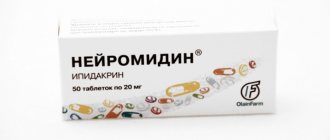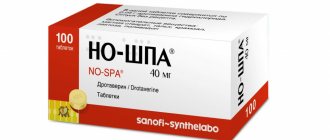Indications for piracetam
Piracetam, the instructions for use indicate this, is in demand to combat many neurological, psychiatric and drug addiction problems. The wide scope of use is associated with the following properties:
- Positive effect on metabolic processes.
- The ability to improve blood circulation in the brain.
Indications for use are:
- Headaches and dizziness of various etiologies.
- The need to protect the brain from the effects of various damaging factors: intoxication, trauma, etc.
- The occurrence of cognitive impairment against the background of various diseases, which is manifested by memory deterioration.
The drug is used in the complex treatment of various mental illnesses and depressive conditions. It is also used in the treatment of chronic alcoholism, when persistent disorders of brain activity occur. When using the drug, it is possible to recover faster from brain injuries. This remedy improves the condition of patients with the development of dementia resulting from cerebral circulatory disorders. It is recommended for the prevention of Alzheimer's disease.
The drug is approved for the treatment of children in cases of confirmed dyslexia and other painful conditions, the symptoms of which are learning difficulties. The drug is indicated for perinatal brain damage. It is used for oligophrenia, cerebral palsy, and mental retardation.
Piracetam amp 200mg/ml 5ml N10 (Grotex)
IV stream or drip, IM. The daily dose is divided into 2-4 doses. Symptomatic treatment of psychoorganic syndrome: 4.8 g/day during the first week, then switch to a maintenance dose of 1.2-2.4 g/day. Treatment of dizziness and related balance disorders: 2.4-4.8 g/day. Treatment of cortical myoclonus: start with a dose of 7.2 g/day, every 3-4 days the dose is increased by 4.8 g/day until a maximum dose of 24 g/day is reached. Treatment is continued throughout the entire period of the disease. Every 6 months you should try to reduce the dose IV by stream or drip, IM. The daily dose is divided into 2-4 doses. Symptomatic treatment of psychoorganic syndrome: 4.8 g/day during the first week, then switch to a maintenance dose of 1.2-2.4 g/day. Treatment of dizziness and related balance disorders: 2.4-4.8 g/day. Treatment of cortical myoclonus: start with a dose of 7.2 g/day, every 3-4 days the dose is increased by 4.8 g/day until a maximum dose of 24 g/day is reached. Treatment is continued throughout the entire period of the disease. Every 6 months you should try to reduce the dose or discontinue the drug, gradually reducing the dose by 1.2 g/day every 2 days. If there is little or no therapeutic effect, treatment is stopped. For sickle cell vaso-occlusive crisis (in adults and children): IV 300 mg/kg/day, divided into 4 equal doses. Treatment of dyslexia in children over 8 years of age (in combination with other treatment methods) - 3.2 g, divided into 2 equal doses. For mild chronic renal failure (KK 50-79 ml/min) - 2/3 of the dose divided into 2-3 doses; moderate degree (KK 30-49 ml/min) - 1/3 of the dose, divided into 2 doses; severe (KK 20-30 ml/min) -1/6 dose once. or discontinue the drug, gradually reducing the dose by 1.2 g/day every 2 days. If there is little or no therapeutic effect, treatment is stopped. For sickle cell vaso-occlusive crisis (in adults and children): IV 300 mg/kg/day, divided into 4 equal doses. Treatment of dyslexia in children over 8 years of age (in combination with other treatment methods) - 3.2 g, divided into 2 equal doses. For mild chronic renal failure (KK 50-79 ml/min) - 2/3 of the dose divided into 2-3 doses; moderate degree (KK 30-49 ml/min) - 1/3 of the dose, divided into 2 doses; severe (KK 20-30 ml/min) -1/6 dose once.
Contraindications and side effects
Since piracetam is used in the treatment of various pathologies, the instructions focus on this, only a doctor should prescribe its use, based on the patient’s condition and the presence of contraindications. Do not use the drug if you are hypersensitive to the active substance or other components included in its composition. The medicine is not used to treat children under one year of age, as well as during pregnancy and lactation.
Piracetam tablets, the instructions indicate this, are not used in the presence of the following pathologies:
- Huntington's chorea, which is a genetic disease and is characterized at the initial stage of development by impaired coordination of movements.
- Chronic renal failure in severe form.
- Hemorrhagic stroke.
- Psychomotor agitation.
The decision to take piracetam should be made with extreme caution in case of hemostasis disorders, severe bleeding, or after major surgical operations.
Various side effects were observed when taking the drug. Patients most often experienced the following body reactions:
- Nausea and vomiting.
- Headache.
- Hives.
- Diarrhea.
As a rule, such side effects disappear on their own during therapy. More dangerous symptoms while taking the drug are decreased blood pressure, abdominal pain, depression, hallucinations, dermatitis, and confusion. Sometimes during treatment with the drug, motor disinhibition, increased libido, drowsiness or insomnia, and a constant feeling of internal anxiety occur. Overdose may increase side effects.
Buy Piracetam solution intravenously and intramuscularly 20% 5ml No. 10 in pharmacies
Pharmacological action The active component is piracetam, a cyclic derivative of gamma-aminobutyric acid (GABA). Piracetam is a nootropic that directly affects the brain, improving cognitive processes such as learning, memory, attention, and mental performance. Piracetam affects the central nervous system in various ways: by changing the speed of propagation of excitation in the brain, it improves metabolic processes in nerve cells, improves microcirculation, and affects the rheological characteristics of the blood without having a vasodilating effect. Improves communication between the cerebral hemispheres and synaptic conduction in neocortical structures, improves cerebral blood flow. Piracetam inhibits platelet aggregation and restores the configurational properties of the outer membrane of rigid erythrocytes, as well as the ability of the latter to pass through microcircular vessels. At a dose of 9.6 g, it reduces the concentration of fibrinogen and von Willebrand factors by 30-40% and prolongs bleeding time. Piracetam has a protective and restorative effect in cases of impaired brain function due to hypoxia and intoxication. Piracetam reduces the severity and duration of vestibular nystagmus.
Indications In adults: - symptomatic treatment of psychoorganic syndrome, accompanied by memory loss, decreased concentration and activity, mood changes, behavior disorder, gait disturbance; - treatment of dizziness (vertigo) and related balance disorders (with the exception of dizziness of vasomotor and psychogenic origin); — treatment of cortical myoclonus (monotherapy or as part of complex therapy); — relief of sickle cell vaso-occlusive crisis. In children: - treatment of dyslexia in children from 8 years of age in combination with other methods; — relief of sickle cell vaso-occlusive crisis.
Contraindications - severe chronic renal failure (creatinine clearance (CK) less than 20 ml/min); - hemorrhagic stroke; - psychomotor agitation; - Huntington's chorea; - pregnancy; - lactation period. With caution: impaired hemostasis; extensive surgical interventions; heavy bleeding; chronic renal failure (KK 20-80 ml/min).
Use during pregnancy and lactation Contraindicated during pregnancy and lactation.
Special instructions Prescribe with caution to patients with impaired hemostasis, before upcoming major surgical interventions or in patients with symptoms of severe bleeding. When treating cortical myoclonus, abrupt cessation of treatment should be avoided, as this may cause a recurrence of attacks. During long-term therapy in elderly patients, regular monitoring of renal function is recommended; if necessary, dose adjustment is carried out depending on QC. Penetrates through the filter membranes of hemodialysis machines. Impact on the ability to drive vehicles and operate machinery During the treatment period, care must be taken when driving vehicles and engaging in other potentially hazardous activities that require increased concentration and speed of psychomotor reactions.
Method of administration and dose: IV stream or drip, IM. The daily dose is divided into 2-4 doses. Symptomatic treatment of psychoorganic syndrome: 4.8 g/day during the first week, then switch to a maintenance dose of 1.2-2.4 g/day. Treatment of dizziness and related balance disorders: 2.4-4.8 g/day. Treatment of cortical myoclonus: start with a dose of 7.2 g/day, every 3-4 days the dose is increased by 4.8 g/day until a maximum dose of 24 g/day is reached. Treatment is continued throughout the entire period of the disease. Every 6 months you should try to reduce the dose or discontinue the drug, gradually reducing the dose by 1.2 g/day every 2 days. If there is little or no therapeutic effect, treatment is stopped. For sickle cell vaso-occlusive crisis (in adults and children): IV 300 mg/kg/day, divided into 4 equal doses. Treatment of dyslexia in children over 8 years of age (in combination with other treatment methods) - 3.2 g, divided into 2 equal doses. For mild chronic renal failure (KK 50-79 ml/min) - 2/3 of the dose divided into 2-3 doses; moderate degree (KK 30-49 ml/min) - 1/3 of the dose, divided into 2 doses; severe (KK 20-30 ml/min) -1/6 dose once.
Side effects From the central nervous system: motor disinhibition, irritability, drowsiness, depression, asthenia, headache, insomnia, mental agitation, imbalance, ataxia, exacerbation of epilepsy, anxiety, hallucinations, confusion. From the digestive system: nausea, vomiting, diarrhea, abdominal pain. Metabolism: increased body weight. From the senses: vertigo. From the skin: dermatitis, itching, rashes. Allergic reactions: hypersensitivity, anaphylactic reactions, angioedema. Local reactions: pain at the injection site, thrombophlebitis. Other: fever, decreased blood pressure. Drug interactions When used simultaneously with iodine-containing thyroid hormones, confusion, irritability and sleep disturbance may occur. In high doses (9.6 g/day) in patients with venous thrombosis, it increases the anticoagulant effect of indirect anticoagulants (a more pronounced decrease in platelet aggregation, fibrinogen content, von Willebrand factor, blood and plasma viscosity). Pharmaceutically compatible with solutions of dextrose (5%, 10%, 20%), fructose (5%, 10%, 20%), 0.9% sodium chloride solution, Ringer's solution, 20% mannitol solution, hydroxyethyl starch (6%, 10%) .
Overdose Symptoms: abdominal pain, diarrhea mixed with blood. Treatment: induction of vomiting, gastric lavage, symptomatic therapy, hemodialysis (effectiveness 50-60%). There is no specific antidote.
Storage conditions Store in a place protected from light, at a temperature not exceeding 25°C. Keep out of the reach of children.
Shelf life: 5 years.
Instructions for use, price, reviews analogues
Piracetam must be taken in accordance with the instructions for use, as tablets and capsules are intended for internal use. The daily dosage is calculated depending on the patient’s weight and is 30-160 mg per kilogram of weight. The drug is taken 2-4 times a day, but to prevent the occurrence of insomnia, the last dose should be no later than 17 hours before bedtime.
The dosage regimen is developed by the doctor. It may vary depending on the pathology. Thus, the drug is used in complex methods of rehabilitation therapy in the treatment of serious brain damage. For recovery from complex psychotic disorders, it is used in combination with psychotropic drugs.
The price of pirocetam may vary depending on the manufacturer. But in any case, it is accessible. Today you can buy analogues of the drug in pharmacies. They are presented as single drugs and complex drugs. When prescribing such drugs, the doctor must take into account their interaction with other medications.
All nootropic drugs are highly effective, as evidenced by numerous patient reviews. First of all, they note the cumulative effect of the drug. Many note the ability to withstand heavy loads without losing concentration. You can also often find positive reviews about the treatment of children.

